
There are many forms of transport in Australia. Australia is highly dependent on road transport. There are more than 300 airports with paved runways. Passenger rail transport includes widespread commuter networks in the major capital cities with more limited intercity and interstate networks. The Australian mining sector is reliant upon rail to transport its product to Australia's ports for export.

Eyre Highway is a 1,664-kilometre (1,034 mi) highway linking Western Australia and South Australia via the Nullarbor Plain. Signed as National Highways 1 and A1, it forms part of Highway 1 and the Australian National Highway network linking Perth and Adelaide. It was named after explorer Edward John Eyre, who was the first European to cross the Nullarbor by land, in 1840–1841. Eyre Highway runs from Norseman in Western Australia, past Eucla, to the state border. Continuing to the South Australian town of Ceduna, it crosses the top of the Eyre Peninsula before reaching Port Augusta.
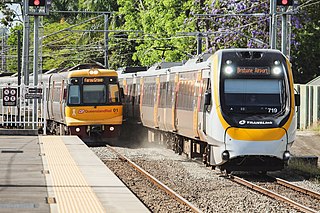
Rail transport in Australia is a component of the Australian transport system. It is to a large extent state-based, as each state largely has its own operations, with the interstate network being developed ever since Australia's federation in 1901. As of 2022, the Australian rail network consists of a total of 32,929 kilometres (20,461 mi) of track built to three major track gauges: 18,007 kilometres (11,189 mi) of standard gauge, 2,685 kilometres (1,668 mi) of broad gauge, and 11,914 kilometres (7,403 mi) of narrow gauge lines. Additionally, about 1,400 kilometres (870 mi) of 610 mm / 2 ft gauge lines support the sugar-cane industry. 3,488 kilometres (2,167 mi), around 11 percent of the Australian heavy railways network route-kilometres are electrified.
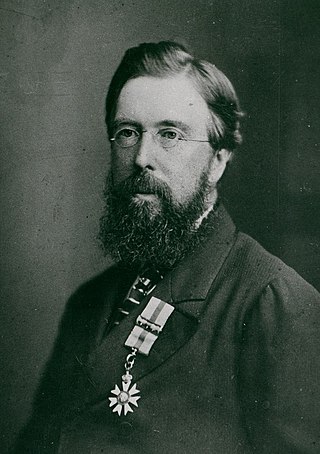
Sir Charles Todd worked at the Royal Greenwich Observatory 1841–1847 and the Cambridge University observatory from 1847 to 1854. He then worked on telegraphy and undersea cables until engaged by the government of South Australia as astronomical and meteorological observer, and head of the electric telegraph department.

The All Red Line was a system of electrical telegraphs that linked much of the British Empire. It was inaugurated on 31 October 1902. The informal name derives from the common practice of colouring the territory of the British Empire red or pink on political maps.

The rail network in Adelaide, South Australia, consists of four lines and 89 stations, totalling 132 km (82 mi). It is operated by Keolis Downer under contract from the Government of South Australia, and is part of the citywide Adelaide Metro public transport system.
Australians generally assumed in the 1850s that railways would be built by the private sector. Private companies built railways in the then colonies of Victoria, opened in 1854, and New South Wales, where the company was taken over by the government before completion in 1855, due to bankruptcy. South Australia's railways were government owned from the beginning, including a horse-drawn line opened in 1854 and a steam-powered line opened in 1856. In Victoria, the private railways were soon found not to be financially viable, and existing rail networks and their expansion were taken over by the colony. Government ownership also enabled railways to be built to promote development, even if not apparently viable in strictly financial terms. The railway systems spread from the colonial capitals, except for a few lines that hauled commodities to a rural port.

The Overseas Telecommunications Commission (OTC) was established by Australia in August 1946. It inherited facilities and resources from Amalgamated Wireless Australasia (AWA) and Cable & Wireless, and was charged with responsibility for all international telecommunications services into, through and out of Australia. In effect, all overseas telecommunications was nationalized. Australia was adopting a Commonwealth-wide policy that had been adopted at the Commonwealth conference in 1945. The main goal was to end the artificial routing of traffic to cable or wireless depending on private financial profits.

The Australian Overland Telegraph Line was an electrical telegraph system for sending messages the 3200 kilometres between Darwin, in what is now the Northern Territory of Australia, and Adelaide, the capital of South Australia. Completed in 1872, it allowed fast communication between Australia and the rest of the world. When it was linked to the Java-to-Darwin submarine telegraph cable several months later, the communication time with Europe dropped from months to hours; Australia was no longer so isolated from the rest of the world. The line was one of the great engineering feats of 19th-century Australia and probably the most significant milestone in the history of telegraphy in Australia.
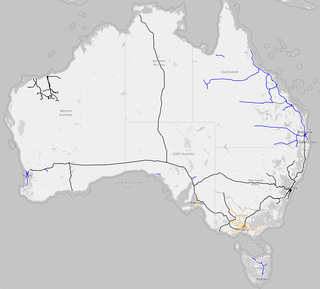
Rail gauges in Australia display significant variations, which has presented an extremely difficult problem for rail transport on the Australian continent since the 19th century. As of 2022, there are 11,914 kilometres (7,403 mi) of narrow-gauge railways, 18,007 kilometres (11,189 mi) of standard gauge railways and 2,685 kilometres (1,668 mi) of broad gauge railways. In the 19th century, each of the colonies of Australia adopted their own gauges.
The following lists events that happened during 1870 in Australia.
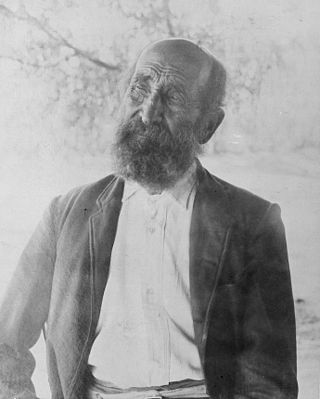
John Ross was a Scottish Australian drover and explorer.
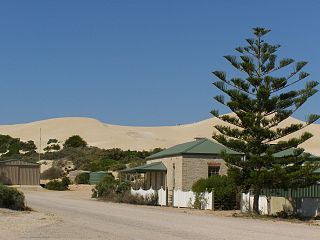
Fowlers Bay, formerly known as Yalata, is a bay, town and locality in the Australian state of South Australia located about 658 kilometres (409 mi) north-west of the state capital, Adelaide. The town is located on Port Eyre, at the western end of the larger Fowlers Bay. It was named Yalata after Yalata station, established in the 1860s and stretching from the Nullarbor Plain across to near Streaky Bay on the Eyre Peninsula, whose homestead was located on the hill nearby. The name Yalata now belongs to a small Aboriginal community further west, which was also situated on station land.

The Pacific Cable Station was built in 1902 in Southport, Gold Coast City, Queensland, Australia, continuing to operate for sixty years, finally closing in 1962. While most of the site has been dismantled, the Southport Cable Hut remains and has been listed on the Queensland Heritage Register and the Gold Coast Local Heritage Register.

Oppenheimer poles are galvanised iron telegraph poles. They consist of three oval sections that collapse into each other telescope-style for transportation. Once extended, the joints between the sections are clamped with collars. The pole is fixed to a base for support with a u-bolt.

The Alice Springs Telegraph Station is located within the Alice Springs Telegraph Station Historical Reserve, four kilometres north of the Alice Springs town centre in the Northern Territory of Australia. Established in 1872 to relay messages between Darwin and Adelaide, it is the original site of the first European settlement in central Australia. It was one of twelve stations along the Overland Telegraph Line.

The Broome Cable House opened on 9 April 1889 and is now known as the Broome Court House. Constructed in 1879, the facility was used as a cable station until March 1914. It is listed on the Western Australia State Heritage Register.

Darwent & Dalwood was a partnership of Joseph Darwent and William Dalwood put together expressly to tender for work on the Overland Telegraph Line.

Richard Randall Knuckey, often referred to as R.R. Knuckey and popularly known as Dick Knuckey, was a surveyor on the Overland Telegraph Line in central Australia from 1871 to 1872. He later became chief officer at the electric telegraph department in Adelaide.
Joseph Oppenheimer, was a German born merchant and inventor, and naturalised British citizen who spent most of his adult life working in the telegraphy industry in Australia and the United Kingdom. He held several key patents, including one for telescoping telegraphic poles.





















